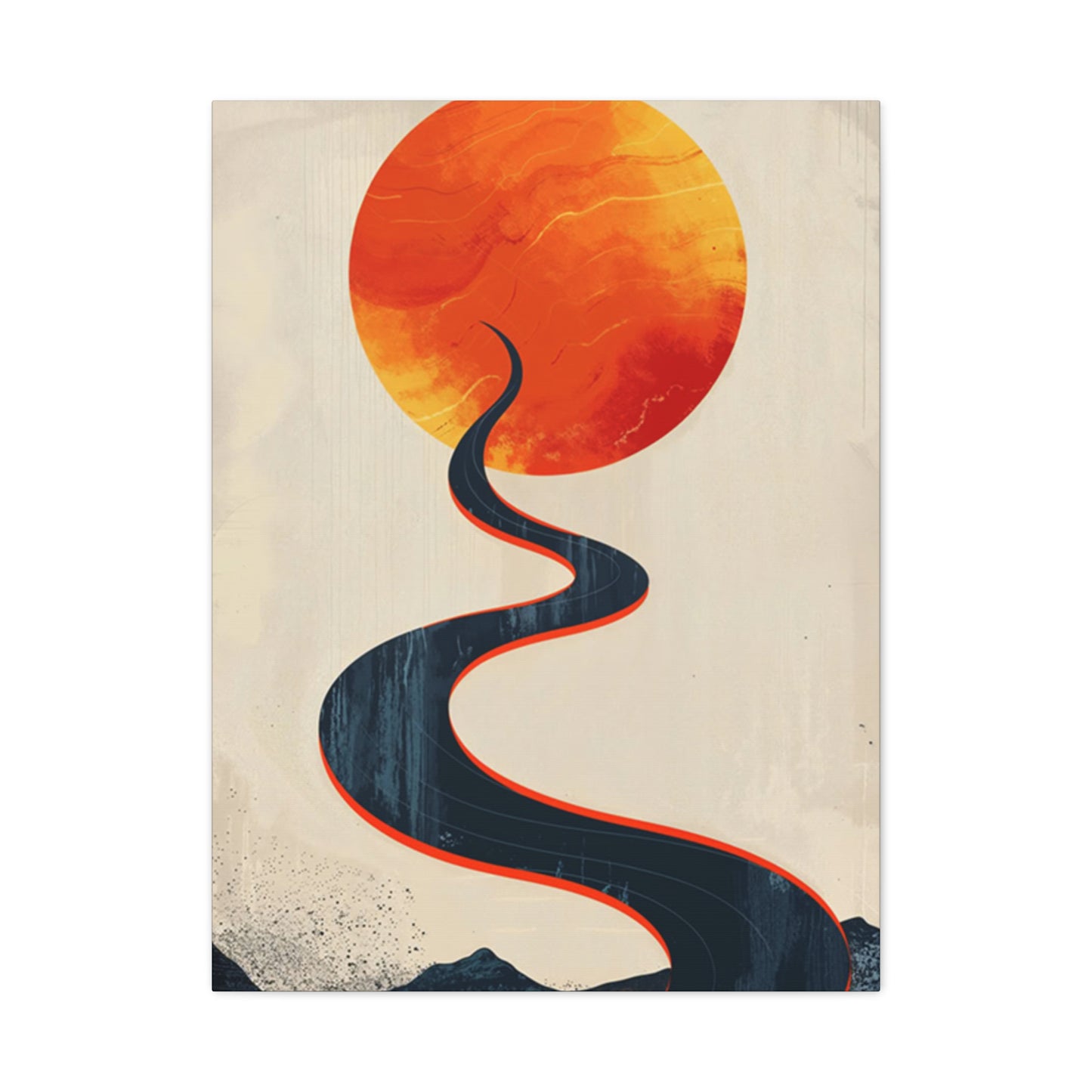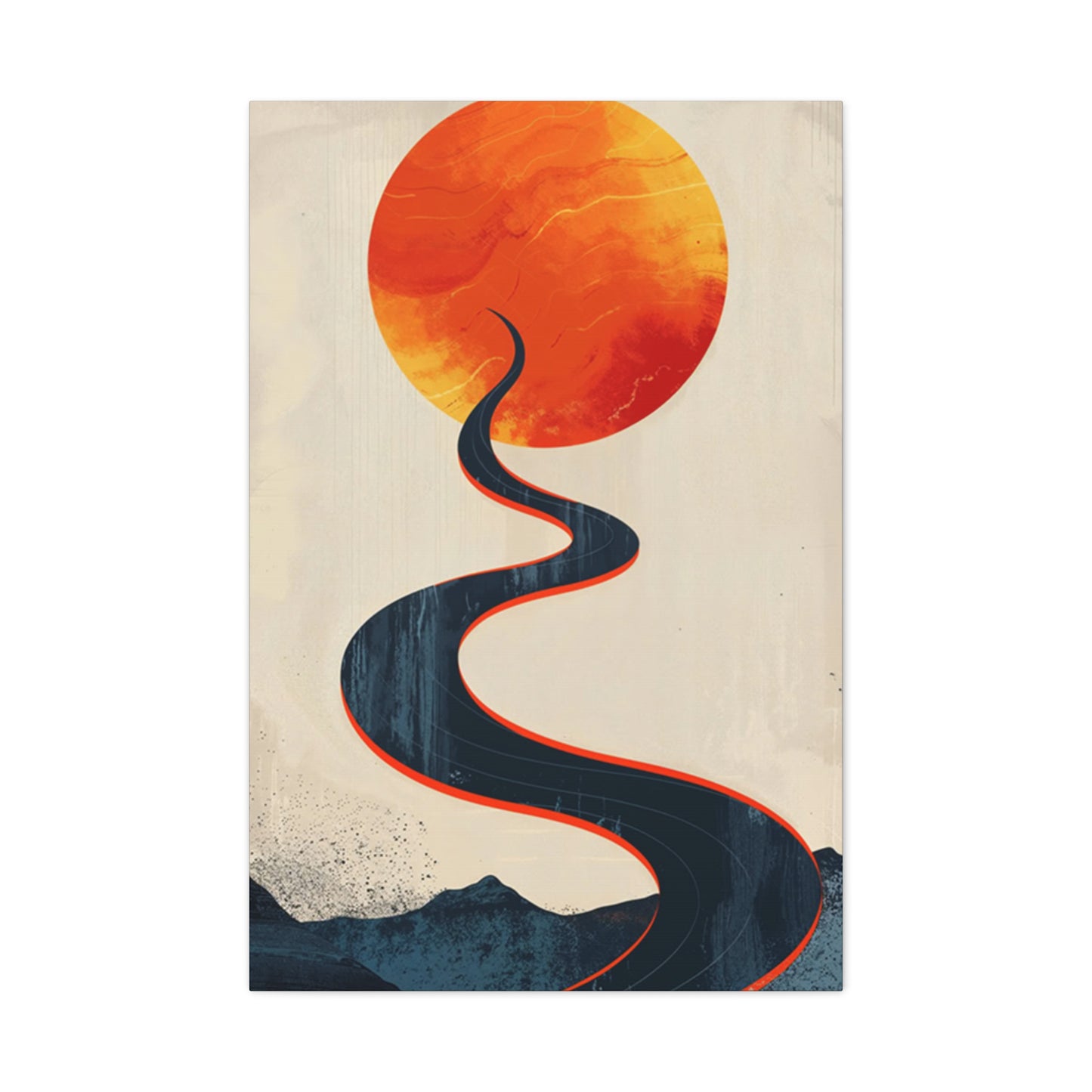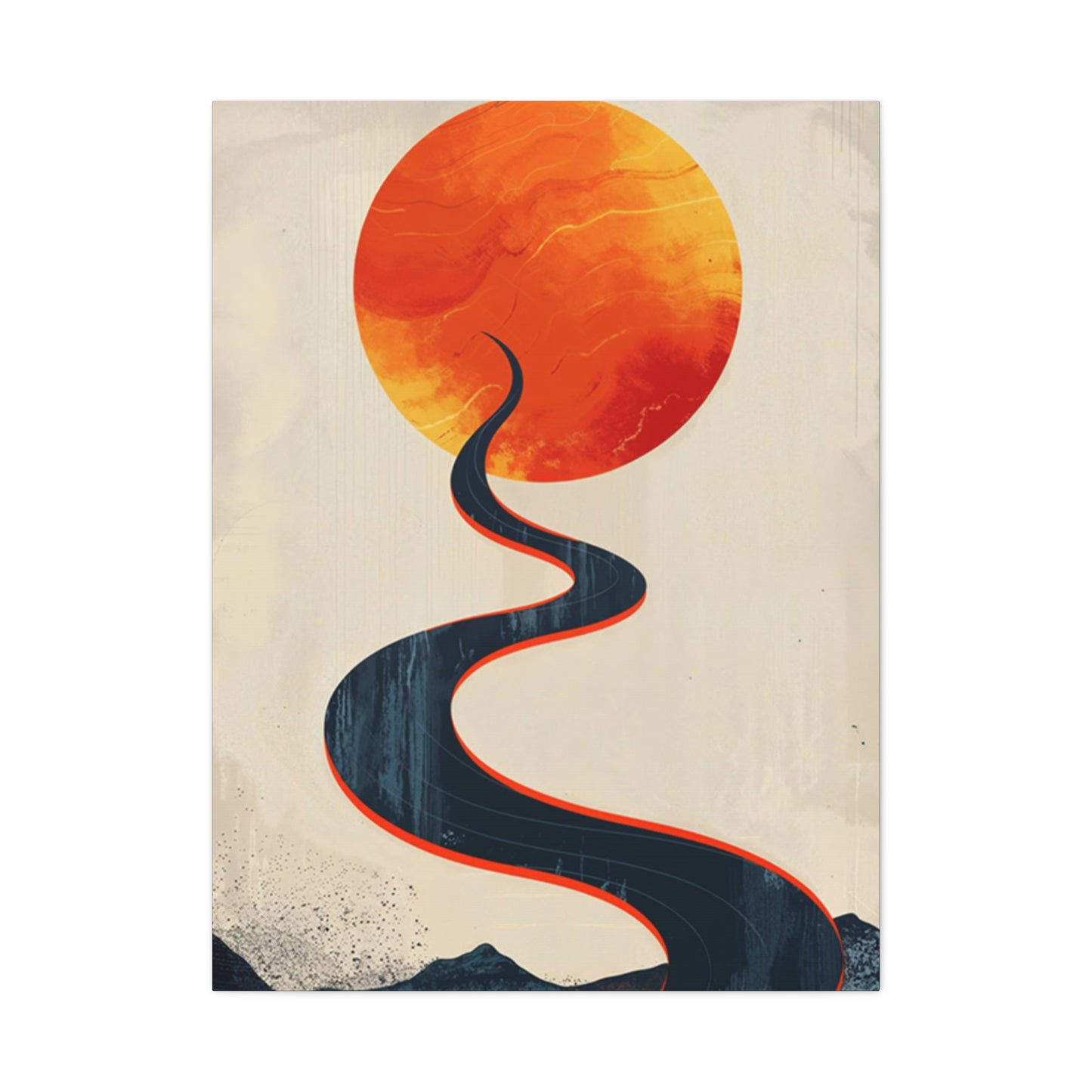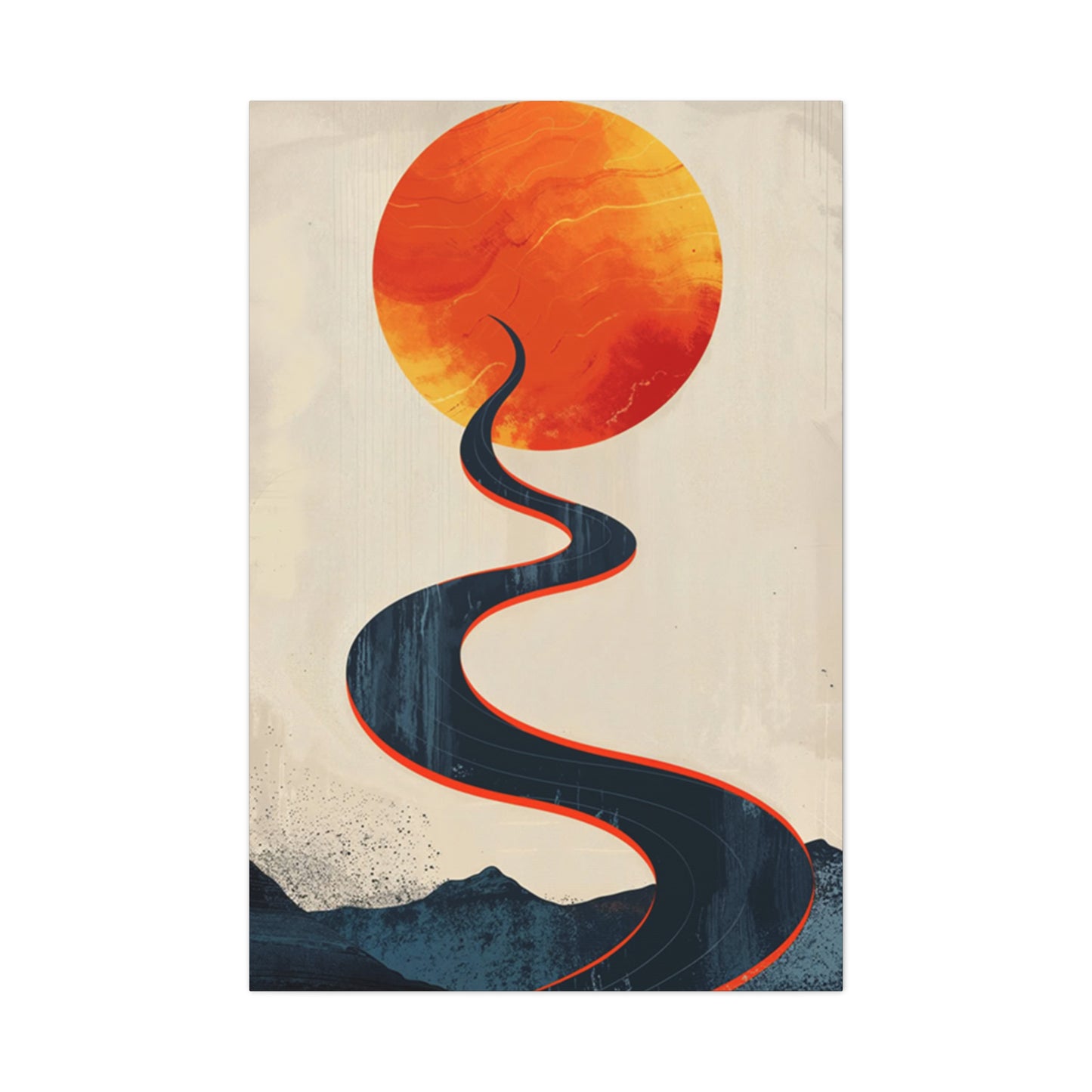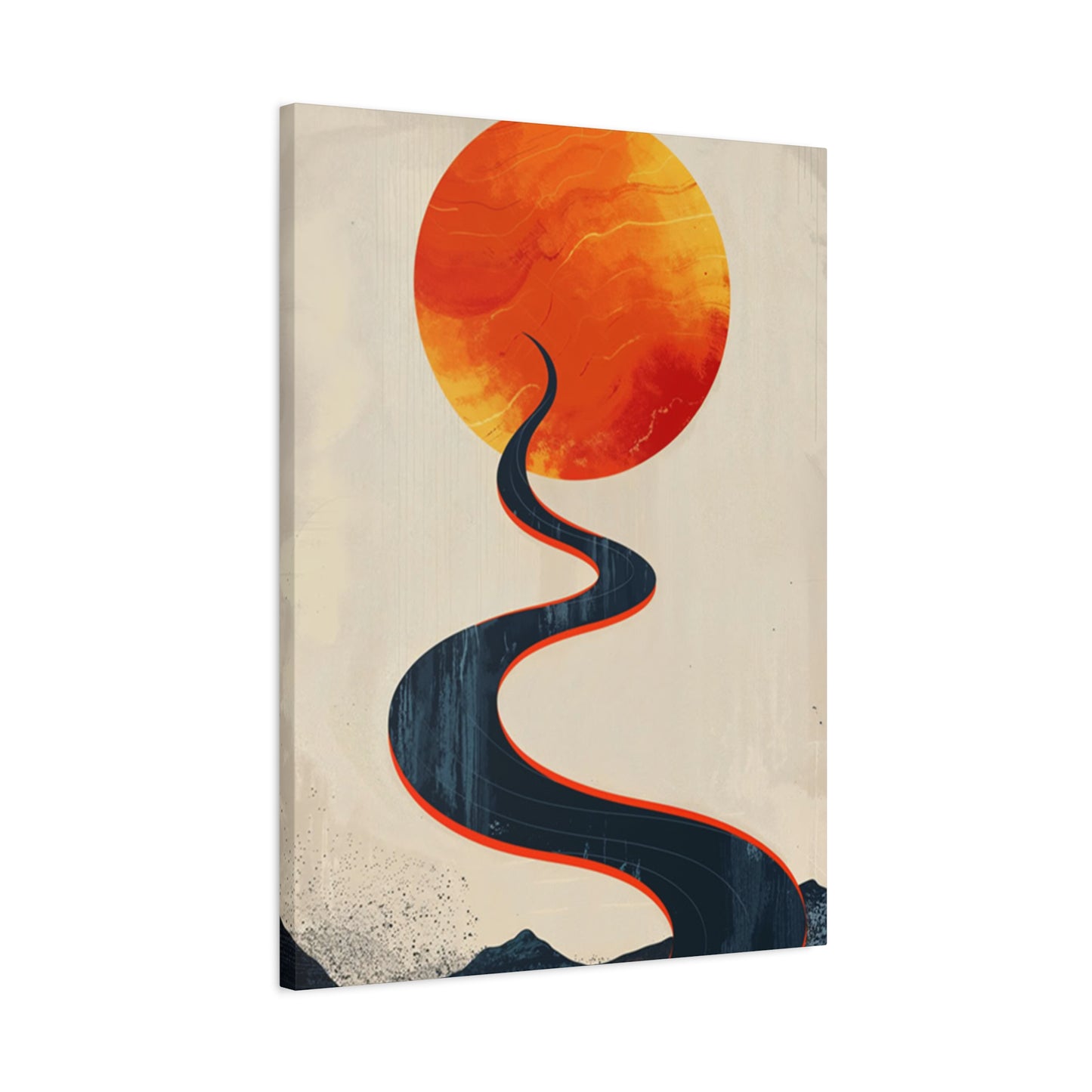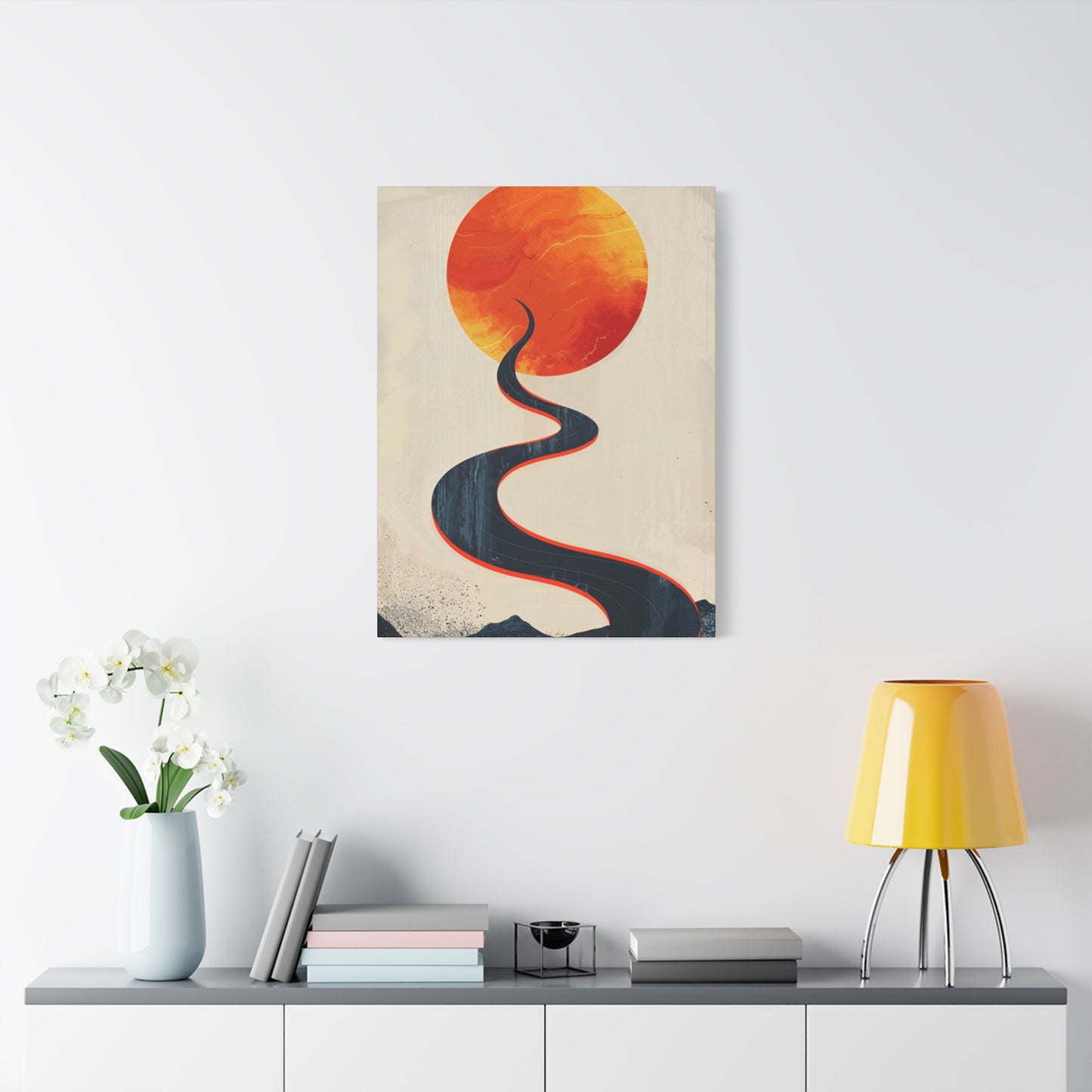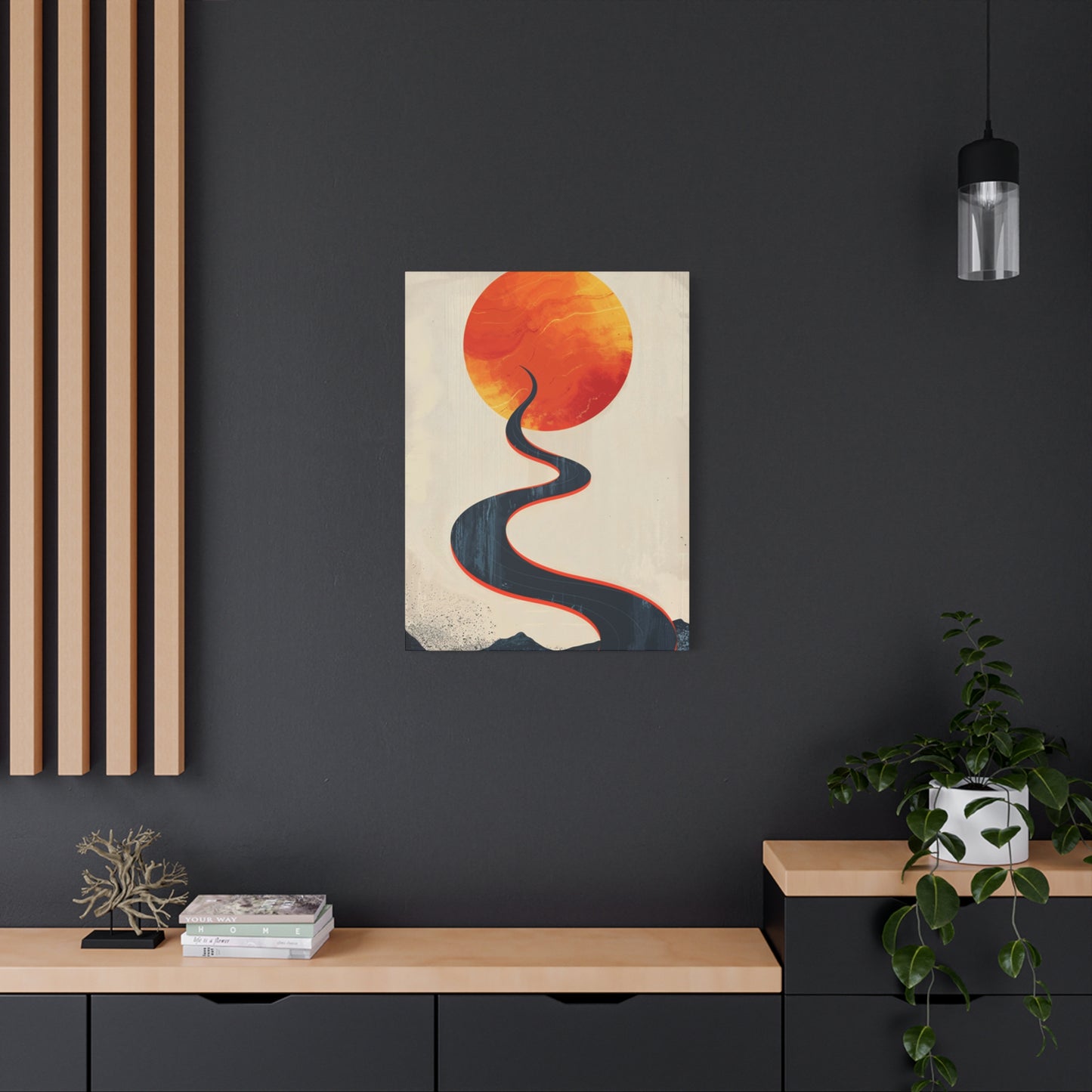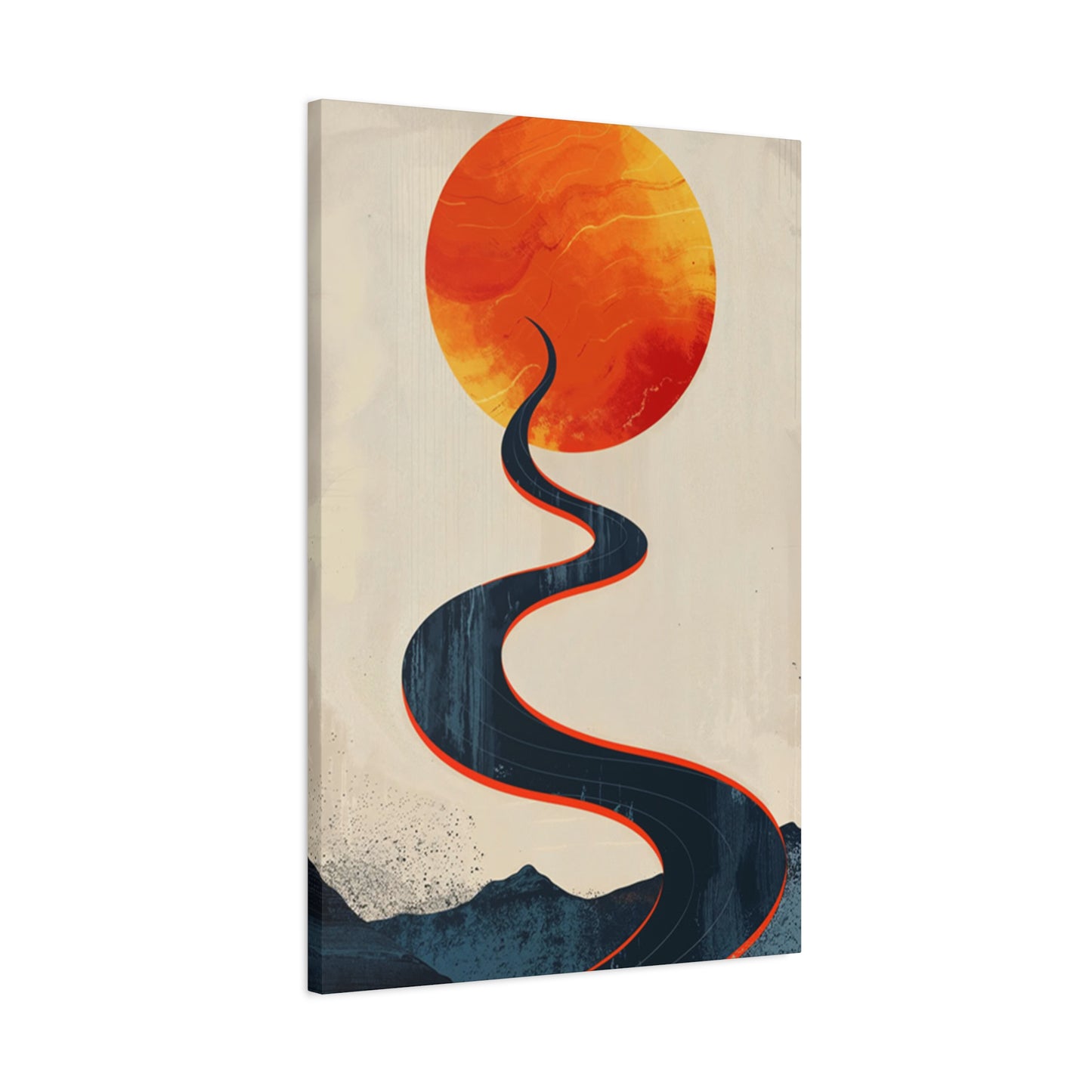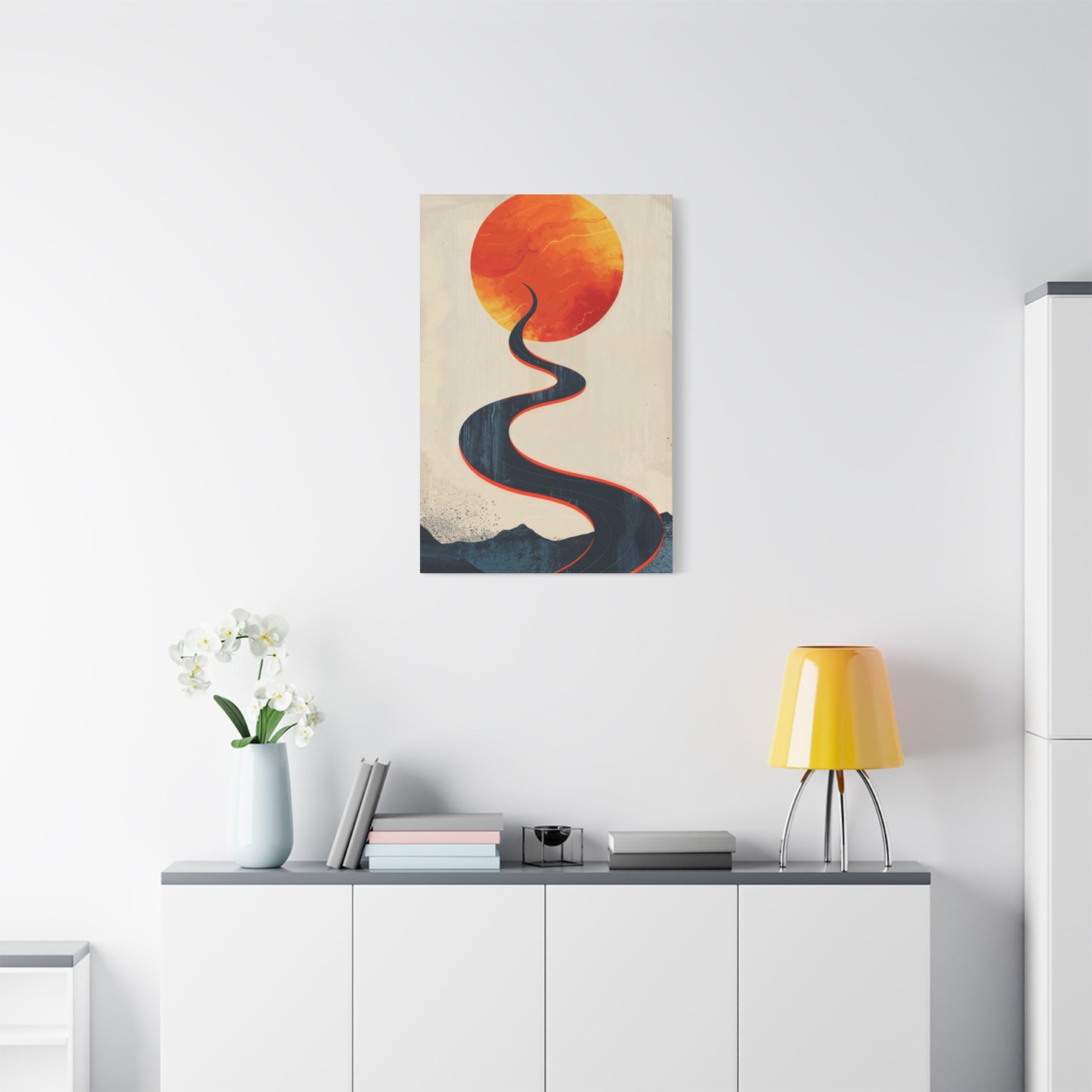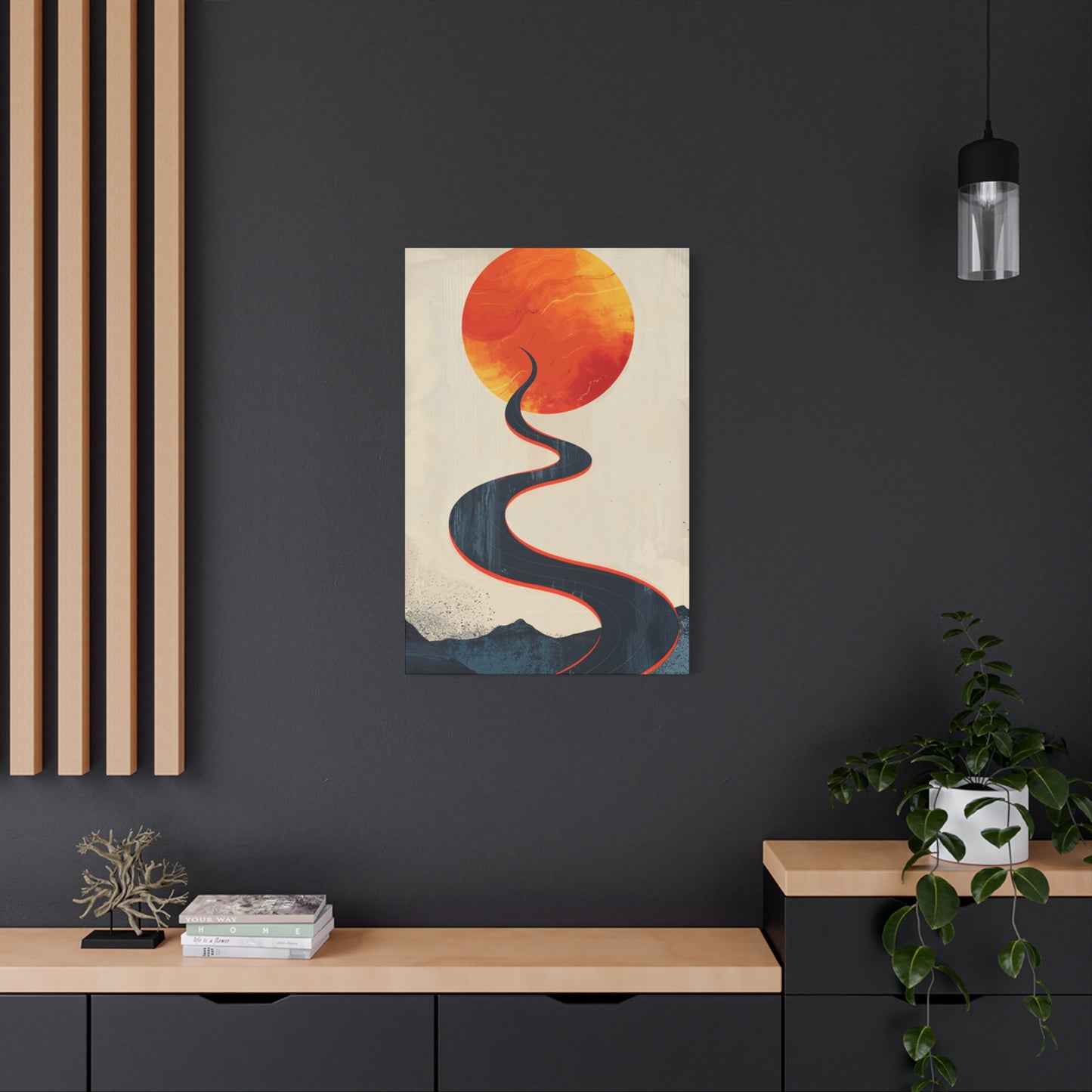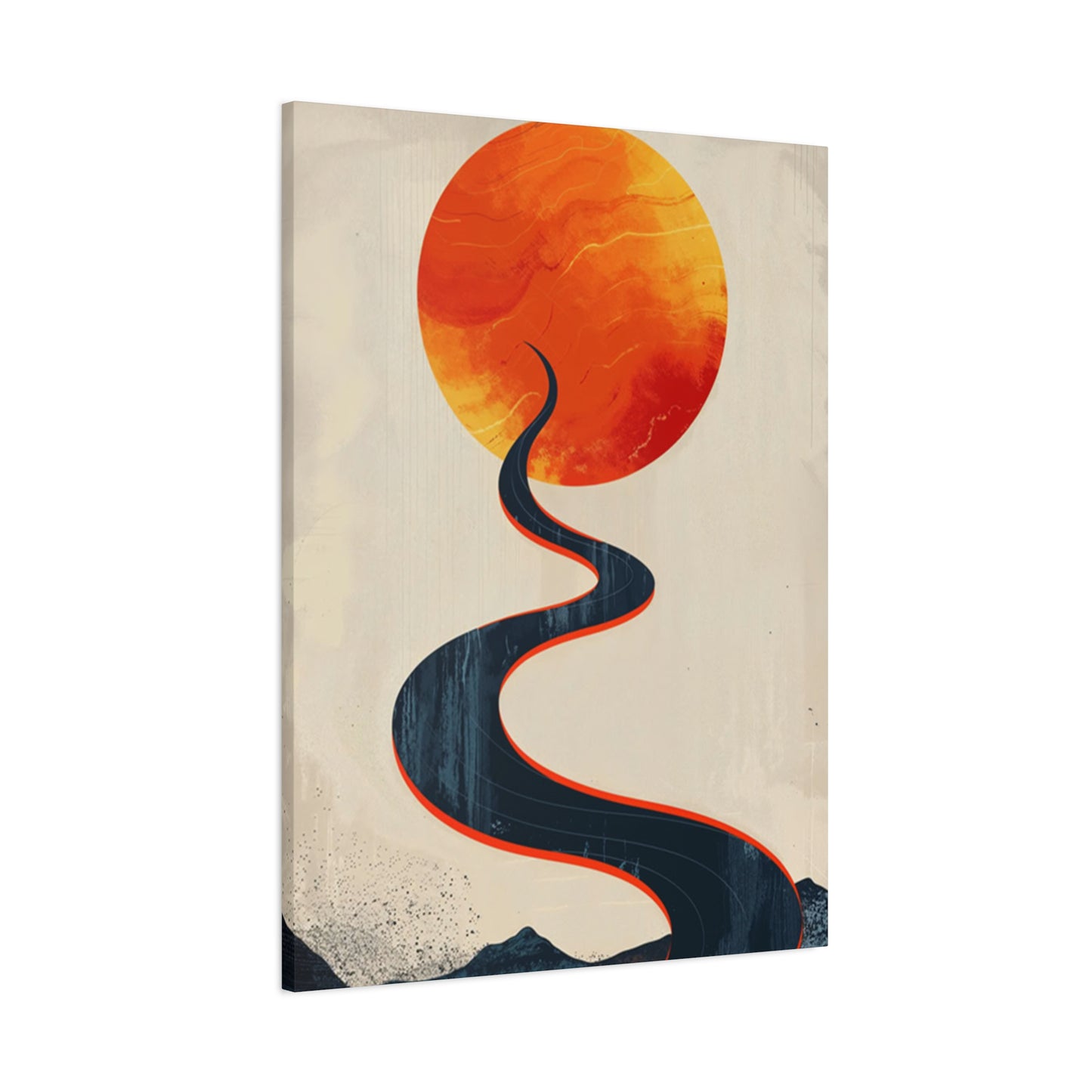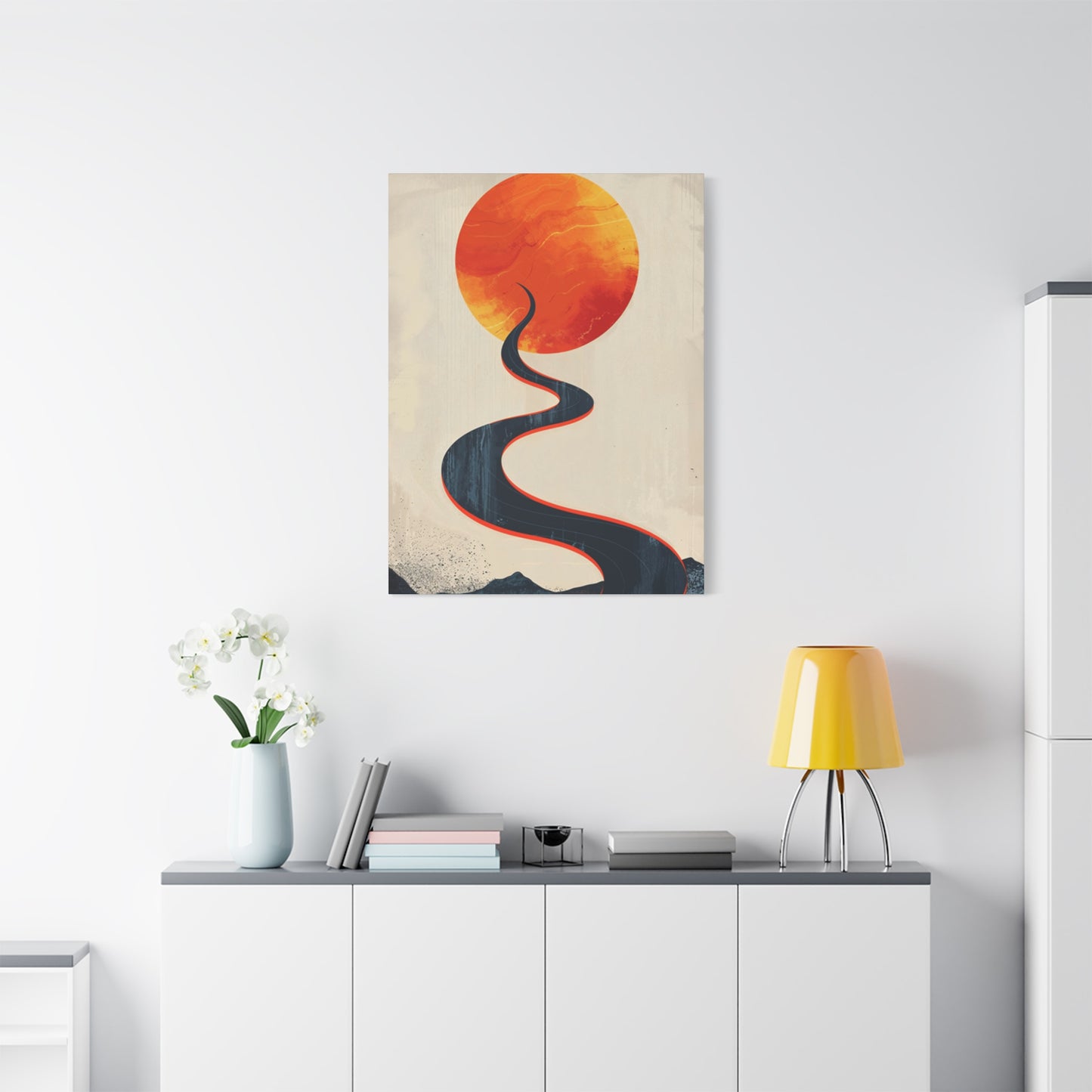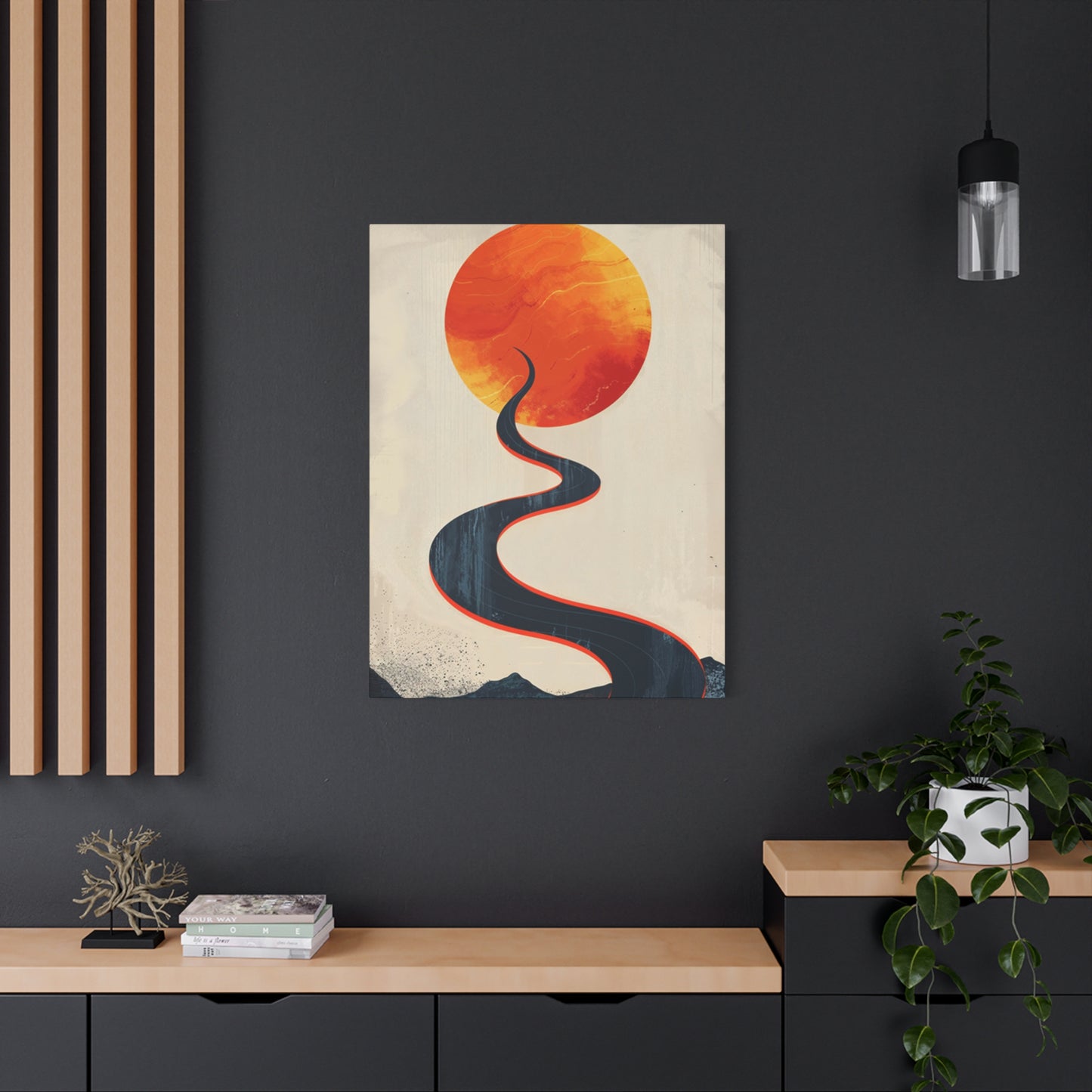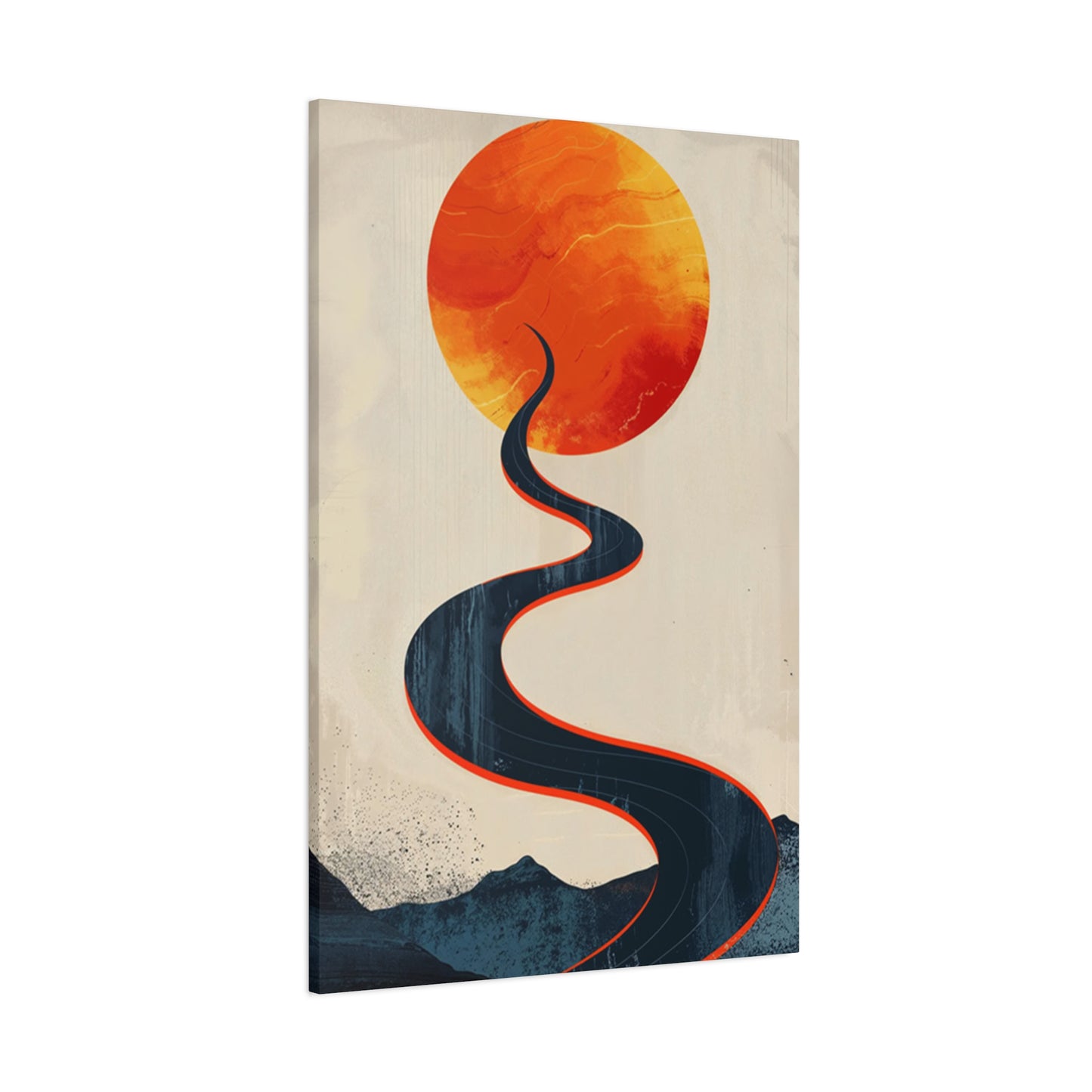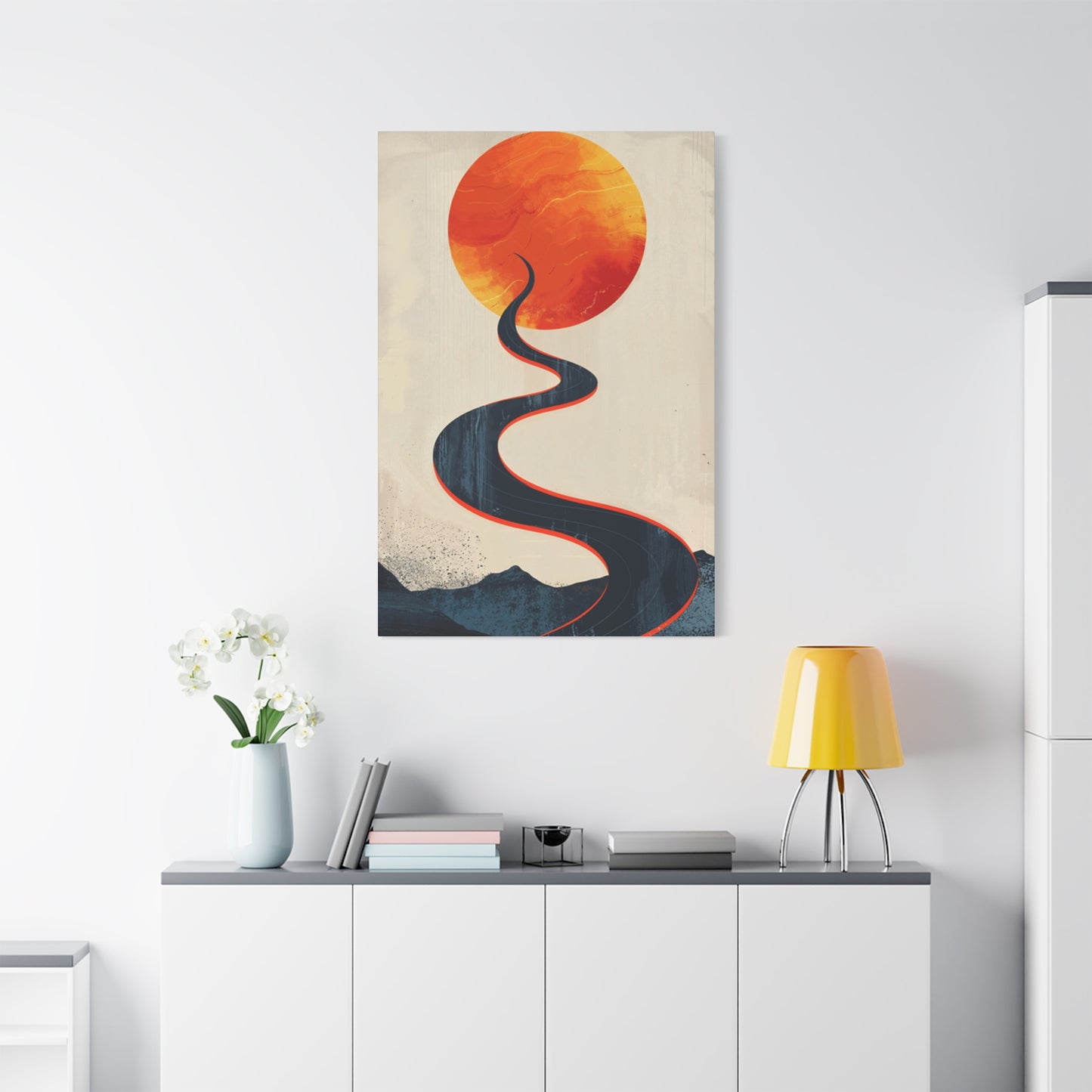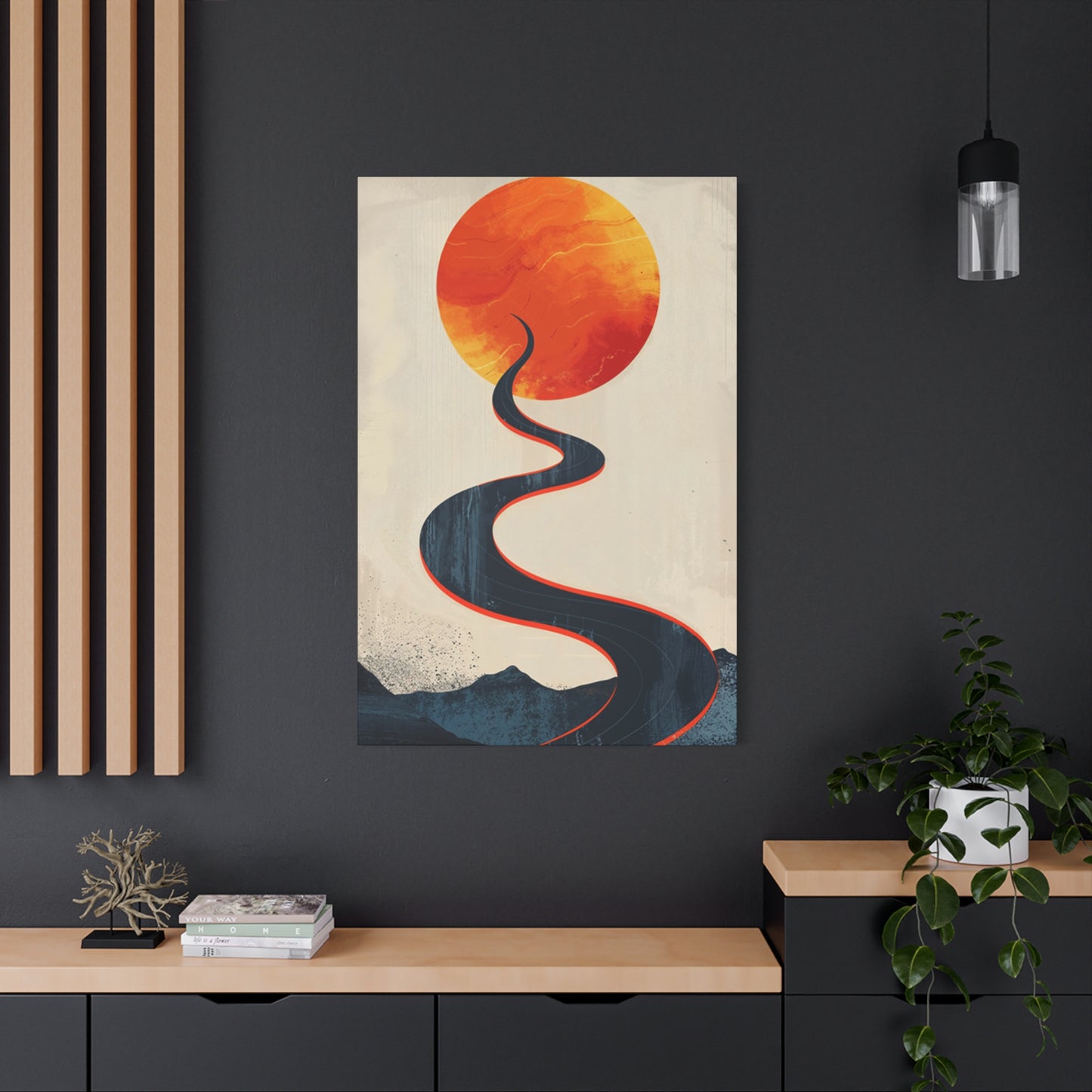Road to Moon Wall Art: Celestial Journey Through Artistic Expression
The enchanting concept of a "Road to Moon" has captivated human imagination for centuries, representing our eternal quest to reach beyond earthly boundaries and explore the vast cosmos above. This celestial theme has found its perfect expression in contemporary wall art, where artists and homeowners alike embrace the mystique and beauty of lunar imagery. The growing popularity of moon-themed artwork reflects our deep-seated connection to the night sky and our desire to bring celestial wonder into our daily lives.
Moon-themed wall art serves as more than mere decoration; it acts as a portal to dreams, aspirations, and the infinite possibilities that lie beyond our terrestrial existence. From minimalist line drawings depicting a simple path stretching toward the lunar surface to elaborate mixed-media compositions featuring starlit highways leading to celestial destinations, these artistic pieces transform ordinary rooms into gateways of imagination and inspiration.
The appeal of lunar artwork transcends age groups and design preferences, making it a versatile choice for various environments. Whether adorning a child's bedroom to spark curiosity about astronomy, enhancing a meditation room to promote peaceful contemplation, or serving as a conversation starter in a living room, moon-themed wall art brings a sense of wonder and tranquility to any setting.
Contemporary artists have embraced this theme with remarkable creativity, producing works that range from photorealistic depictions of lunar landscapes to abstract interpretations that capture the emotional essence of our relationship with the moon. These pieces often incorporate elements of journey and movement, suggesting pathways, bridges, or roads that connect our earthly realm with the mysterious lunar world above.
The symbolic significance of the moon in human culture adds depth to these artistic expressions. Throughout history, the moon has represented cycles of renewal, feminine energy, intuition, and the passage of time. When artists incorporate these themes into their work, they create pieces that resonate on both aesthetic and spiritual levels, offering viewers an opportunity to connect with something greater than themselves.
Modern technology has expanded the possibilities for moon-themed wall art, allowing artists to experiment with luminescent paints, LED lighting, and interactive elements that bring their celestial visions to life. These innovative approaches create dynamic pieces that change throughout the day, mimicking the natural cycles of the moon and adding an element of temporal beauty to the artwork.
The "Road to Moon" concept particularly appeals to those who value personal growth and aspiration. The imagery suggests a journey of self-discovery, encouraging viewers to pursue their dreams and reach for seemingly impossible goals. This motivational aspect makes such artwork especially popular in offices, study rooms, and other environments where inspiration and focus are desired.
Significance Behind Road to Moon Artistic Expression
The profound meaning embedded within "Road to Moon" artwork extends far beyond its visual appeal, touching upon fundamental human experiences and universal themes that resonate across cultures and generations. This artistic concept serves as a powerful metaphor for the human condition, representing our innate desire to transcend limitations and explore realms beyond our immediate reach.
At its core, the "Road to Moon" symbolizes the journey of personal transformation and growth. The moon, positioned as a distant yet attainable destination, represents our highest aspirations and dreams. The path or road leading to it signifies the steps we must take, the challenges we must overcome, and the persistence required to achieve our goals. This imagery speaks to the universal human experience of striving for something greater, whether it be personal achievement, spiritual enlightenment, or creative fulfillment.
The artistic representation of this concept often incorporates elements that enhance its symbolic power. Winding paths suggest that the journey toward our goals is rarely straightforward, requiring adaptability and resilience. Steep inclines in the road might represent the difficulties we encounter, while smooth stretches could symbolize periods of ease and progress. The interplay between light and shadow in these compositions often reflects the dual nature of any meaningful journey, acknowledging both the illuminated moments of clarity and the darker periods of uncertainty.
Cultural interpretations of the "Road to Moon" theme vary significantly, adding layers of meaning to the artwork. In Eastern philosophy, the moon often represents enlightenment and the cyclical nature of existence, making the road to the moon a metaphor for the spiritual path toward awakening. Western traditions might emphasize the pioneering spirit and scientific achievement, viewing the lunar journey as a testament to human ingenuity and determination.
The temporal aspect of moon-themed art adds another dimension to its meaning. The moon's phases remind us of the cyclical nature of progress, suggesting that setbacks and advances are natural parts of any significant journey. This understanding can provide comfort and encouragement to viewers facing their own challenges, reminding them that difficulties are temporary and that persistence often leads to eventual success.
Many artists incorporate additional symbolic elements to enrich the meaning of their "Road to Moon" pieces. Stars might represent guidance and hope, while clouds could symbolize obstacles or moments of confusion. Trees along the path might signify growth and endurance, while bodies of water could represent the subconscious mind or emotional depths that must be navigated during personal transformation.
The psychological impact of these artworks cannot be understated. Research in environmental psychology suggests that images of expansive landscapes and celestial themes can promote feelings of awe and transcendence, potentially leading to increased creativity, reduced stress, and enhanced well-being. The "Road to Moon" concept particularly excels in this regard, combining the calming influence of lunar imagery with the motivational power of journey metaphors.
Contemporary interpretations of this theme often address modern concerns and aspirations. Environmental artists might use the concept to comment on our relationship with nature and our responsibility to protect the earth while reaching for the stars. Social justice artists might employ the imagery to represent collective struggles for equality and progress, with the moon serving as a symbol of a better future that requires unified effort to achieve.
The universality of the moon's presence in human experience makes this artistic theme accessible to diverse audiences. Regardless of geographical location, cultural background, or personal beliefs, people share a common relationship with the lunar cycle and its influence on earthly life. This shared experience creates an immediate connection between viewers and "Road to Moon" artwork, facilitating both personal reflection and communal understanding.
Nurturing Aspirations Through Lunar Artwork
Lunar-themed wall art possesses a unique ability to inspire and nurture human aspirations, serving as a constant visual reminder of our potential for growth and achievement. The presence of moon-inspired artwork in living and working environments creates an atmosphere that encourages dreaming, planning, and pursuing ambitious goals. This inspirational quality stems from the moon's historical association with mystery, possibility, and the achievement of seemingly impossible feats.
The psychological impact of surrounding ourselves with celestial imagery extends beyond mere aesthetics. Studies in environmental psychology demonstrate that the visual elements in our surroundings significantly influence our mental state, creativity levels, and overall motivation. Moon-themed artwork, particularly pieces that depict journeys or pathways to lunar destinations, can stimulate the imagination and encourage viewers to envision their own paths to success.
The cyclical nature of the moon provides a powerful framework for understanding personal growth and achievement. Just as the moon waxes and wanes in predictable patterns, our own journeys toward our goals involve periods of progress and apparent setbacks. Lunar artwork serves as a gentle reminder that temporary obstacles do not negate overall progress, encouraging persistence and resilience in the face of challenges.
Different phases of the moon represented in artwork can inspire specific types of motivation and reflection. A new moon might symbolize fresh beginnings and the planting of new seeds of intention. A waxing moon could represent growth, learning, and building momentum toward goals. A full moon often symbolizes culmination, achievement, and the realization of potential. A waning moon might encourage reflection, release of what no longer serves, and preparation for the next cycle of growth.
The aspirational power of lunar artwork is particularly evident in educational and professional environments. Schools that display moon-themed art often report increased student interest in science, technology, engineering, and mathematics subjects. The imagery serves as a subtle reminder of human achievement in lunar exploration while encouraging students to pursue their own ambitious academic and career goals.
In corporate settings, lunar artwork can foster innovation and ambitious thinking among employees. The imagery suggests that even the most audacious goals can be achieved through proper planning, dedication, and collaborative effort. This message is particularly relevant in industries that require creative problem-solving and breakthrough thinking.
Home environments benefit equally from the inspirational qualities of lunar artwork. Bedrooms adorned with gentle moon imagery can promote restful sleep while encouraging vivid, aspirational dreams. Study areas enhanced with more dynamic lunar journey artwork can motivate focused effort and academic achievement. Living rooms featuring moon-themed pieces create conversation spaces where family members and guests are naturally drawn to discuss goals, dreams, and future possibilities.
The versatility of lunar symbolism allows artists to create pieces that address various types of aspirations. Career-focused artwork might depict professional figures ascending lunar pathways, symbolizing advancement and success. Relationship-themed pieces might show couples or families journeying together toward celestial destinations, representing shared goals and mutual support. Personal growth artwork might feature solitary figures contemplating the moon, encouraging introspection and self-improvement.
Children respond particularly well to aspirational lunar artwork. The magical quality of moon imagery captures young imaginations while subtly communicating important messages about persistence, curiosity, and the value of dreaming big. Educational lunar artwork can introduce scientific concepts while encouraging interest in astronomy, engineering, and exploration careers.
The aspirational impact of lunar artwork is enhanced when pieces are strategically placed in environments where goal-setting and planning activities occur. Home offices, study areas, and meditation rooms benefit from the presence of moon-themed pieces that encourage both ambitious thinking and peaceful reflection.
Trending Approaches to Lunar Art Creation
Contemporary lunar art has evolved dramatically in recent years, embracing innovative techniques and diverse stylistic approaches that reflect both technological advancement and changing aesthetic preferences. Artists working with moon themes today have access to an unprecedented array of materials, tools, and inspirational sources, resulting in artwork that pushes the boundaries of traditional lunar representation while honoring the timeless appeal of celestial imagery.
Digital art techniques have revolutionized lunar artwork creation, allowing artists to achieve levels of detail and atmospheric effect that were previously impossible. Advanced software enables the creation of photorealistic lunar landscapes complete with accurate surface textures, lighting effects, and astronomical details. These digital tools also facilitate the exploration of fantastical elements, such as impossible lunar architectures, surreal color palettes, and dynamic compositions that blend reality with imagination.
Mixed media approaches have gained significant popularity among contemporary lunar artists. These techniques combine traditional materials like paint and canvas with unconventional elements such as metallic foils, luminescent pigments, fiber optics, and even small LED lighting systems. The result is artwork that changes appearance throughout the day, mimicking the natural cycle of lunar visibility and creating dynamic visual experiences for viewers.
Abstract expressionism has found new life in lunar art, with artists using the moon as inspiration for explorative color work and gestural painting techniques. Rather than focusing on literal representation, these artists capture the emotional and spiritual essence of lunar experience through bold brushstrokes, unconventional color choices, and expressive compositional elements that evoke feelings associated with moonlit nights and celestial wonder.
Minimalist approaches to lunar art have gained traction among artists and collectors who prefer subtle, sophisticated aesthetic statements. These pieces often feature simple geometric representations of lunar phases, clean lines suggesting pathways to celestial destinations, or stark contrasts between dark and light elements that capture the essence of lunar illumination without overwhelming visual complexity.
Photographic approaches to lunar art have been enhanced by advances in astronomical photography and image processing techniques. Contemporary photographers create stunning compositions that combine multiple exposures, time-lapse sequences, and composite imagery to produce artwork that showcases the moon's beauty in ways that exceed what can be observed with the naked eye.
Sculptural lunar art has emerged as an exciting frontier, with artists creating three-dimensional pieces that invite tactile interaction and spatial exploration. These works might feature raised lunar surfaces, suspended elements that suggest floating in gravitational fields, or interactive components that respond to touch or movement. Such pieces transform the viewing experience from passive observation to active engagement.
Environmental and sustainable art practices have influenced lunar artwork creation, with many artists incorporating recycled materials, natural elements, and eco-friendly production techniques. These approaches often result in pieces that connect lunar themes with earthly environmental concerns, creating artwork that celebrates celestial beauty while promoting environmental consciousness.
Cultural fusion approaches blend traditional artistic techniques from various cultures with contemporary lunar themes. Artists might combine traditional Japanese ink painting techniques with modern celestial imagery, or incorporate indigenous storytelling elements into contemporary lunar narratives. These cross-cultural approaches enrich the symbolic depth and universal appeal of lunar artwork.
Technology integration has opened new possibilities for interactive lunar art. Some contemporary pieces incorporate motion sensors, sound elements, or smartphone connectivity to create immersive experiences that respond to viewer presence or interaction. These innovations transform static artwork into dynamic installations that evolve based on environmental conditions or user engagement.
Collaborative approaches to lunar art creation have gained popularity, with artists working together across disciplines to create comprehensive installations or series. Partnerships between visual artists, musicians, poets, and technologists result in multi-sensory lunar art experiences that engage multiple senses and create deeply immersive environments.
The influence of space exploration and astronomical discovery continues to inspire new approaches to lunar art. As scientific understanding of the moon and broader cosmos expands, artists incorporate new information and imagery into their work, creating pieces that are both artistically compelling and scientifically informed.
Creating Celestial Atmospheres in Contemporary Living
The integration of moon-themed artwork into modern living environments requires careful consideration of both aesthetic harmony and atmospheric impact. Successful celestial decoration transcends simple wall hanging to create immersive environments that transport occupants into contemplative, inspiring mindsets that reflect the wonder and tranquility associated with lunar observation and celestial appreciation.
Lighting plays a crucial role in maximizing the impact of lunar artwork within contemporary living areas. Proper illumination can enhance the ethereal qualities of moon-themed pieces while creating ambient conditions that support the overall celestial atmosphere. Soft, indirect lighting mimics natural moonlight conditions and allows artwork to serve as focal points without overwhelming the room's visual balance.
Color palette coordination significantly influences the success of celestial-themed decorating schemes. Cool tones such as deep blues, silvery grays, and muted purples naturally complement moon-themed artwork while creating cohesive environments that feel both sophisticated and tranquil. Warm accent colors can be strategically incorporated to prevent spaces from feeling cold or sterile while maintaining the overall celestial aesthetic.
Furniture selection for celestial-themed rooms should emphasize clean lines, natural materials, and pieces that don't compete with lunar artwork for visual attention. Contemporary and mid-century modern furniture styles often work well with moon-themed decoration, providing sophisticated backdrops that allow celestial artwork to shine as primary design elements.
Textile choices significantly impact the success of celestial decorating schemes. Fabrics with subtle sheen, such as silk or metallic-thread weaves, can echo the reflective qualities of moonlight while adding textural interest to rooms. Velvet and other plush materials create luxurious atmospheres that complement the mysterious qualities of lunar imagery.
Window treatments deserve special consideration in celestial-themed rooms. Sheer curtains or blinds that allow natural light to filter softly into rooms during the day create atmospheric conditions that complement moon-themed artwork. Blackout options for evening hours can enhance the impact of any illuminated artwork elements while supporting optimal conditions for relaxation and contemplation.
Plant selection can enhance celestial themes when chosen thoughtfully. Silver-leafed plants, such as dusty miller or lamb's ear, echo the metallic tones often found in lunar artwork. Plants with interesting nighttime characteristics, such as night-blooming cereus or moon flowers, create living connections to the celestial themes represented in wall art.
Flooring considerations for celestial-themed rooms should emphasize materials and colors that support rather than compete with lunar artwork. Dark hardwood floors can create dramatic contrasts that make moon-themed pieces appear to glow, while light-colored carpets or rugs can soften room acoustics and create comfortable environments for contemplation and relaxation.
Accessory placement requires strategic thinking to maintain focus on lunar artwork while adding supporting elements that enhance the overall celestial theme. Candles, crystals, and metallic objects can serve as subtle echoes of moon symbolism without overwhelming the primary artistic statements.
Room function considerations influence how celestial themes should be implemented. Bedrooms benefit from gentle, soothing lunar imagery that promotes restful sleep and pleasant dreams. Living rooms can accommodate more dynamic moon-themed pieces that serve as conversation starters and focal points for social interaction. Home offices might feature motivational lunar artwork that encourages ambitious thinking and creative problem-solving.
Scale and proportion planning ensures that lunar artwork creates appropriate visual impact without overwhelming room occupants. Large-scale pieces work well in spacious rooms with high ceilings, while smaller works might be more suitable for intimate spaces where close viewing creates personal connections with celestial imagery.
Seasonal adaptation allows celestial-themed rooms to maintain year-round appeal while acknowledging changing natural conditions. Summer arrangements might emphasize cooler tones and lighter textures, while winter decorating could incorporate warmer accent colors and cozier textiles that create comfortable environments for extended indoor time.
Technology integration can enhance celestial atmospheres through automated lighting systems, sound elements, and interactive features that respond to natural lunar cycles or user preferences. Smart home systems can gradually adjust lighting conditions throughout the evening to mimic natural sunset and moonrise patterns, creating deeply immersive celestial experiences.
Lunar Themes in Cultural and Artistic Heritage
The moon has occupied a central position in human cultural expression throughout recorded history, serving as inspiration for countless artistic works, mythological narratives, and spiritual practices across diverse civilizations. This rich cultural heritage provides contemporary lunar artists with an extensive vocabulary of symbolic references and aesthetic approaches that continue to influence modern interpretations of celestial themes in wall art.
Ancient civilizations developed sophisticated mythological frameworks around lunar observation, creating narratives that explained the moon's phases, influences, and significance in human affairs. Egyptian mythology featured lunar deities such as Khonsu and Thoth, who governed time, wisdom, and the afterlife. These ancient associations continue to influence contemporary lunar artwork, with many modern pieces incorporating hieroglyphic elements, geometric patterns, and color palettes inspired by Egyptian artistic traditions.
Greek and Roman cultures contributed philosophical and poetic interpretations of lunar symbolism that remain influential in contemporary artistic expression. The association of the moon with feminine energy, intuition, and cyclic renewal stems largely from classical mythology surrounding goddesses like Artemis, Diana, and Selene. Modern lunar artwork often draws upon these archetypal associations, creating pieces that speak to universal human experiences of growth, change, and renewal.
Asian artistic traditions have produced some of the world's most celebrated lunar imagery, with Chinese and Japanese artists developing distinctive approaches to moon representation that emphasize harmony, balance, and the integration of human experience with natural cycles. The tradition of moon viewing, or tsukimi in Japanese culture, has inspired countless artistic works that capture the contemplative and aesthetic dimensions of lunar appreciation.
Islamic artistic traditions have contributed sophisticated geometric interpretations of celestial themes, with intricate patterns and mathematical relationships that reflect the perceived order and beauty of cosmic design. These influences appear in contemporary lunar artwork through the use of complex geometric compositions, repeating patterns, and architectural elements that suggest cosmic harmony and divine proportion.
Indigenous cultures worldwide have developed unique relationships with lunar cycles, often incorporating moon observations into agricultural practices, ceremonial activities, and storytelling traditions. Contemporary artists drawing from these traditions create lunar artwork that emphasizes the practical and spiritual connections between human communities and celestial rhythms, often incorporating natural materials and earth-based color palettes.
Medieval European art produced illuminated manuscripts and architectural decorations featuring lunar symbolism that emphasized the moon's role in Christian cosmology and agricultural life. Gothic cathedral designs often incorporated lunar motifs alongside solar imagery, creating comprehensive celestial programs that influenced centuries of subsequent artistic development.
Renaissance artists elevated lunar representation through advances in observational accuracy and artistic technique, producing works that combined mythological content with increasingly realistic depictions of lunar features. Artists like Leonardo da Vinci made detailed studies of lunar surfaces and atmospheric effects, establishing traditions of scientific accuracy that continue to influence contemporary astronomical art.
Romantic period artists embraced the moon as a symbol of emotional intensity, spiritual longing, and connection with sublime natural forces. Painters like Caspar David Friedrich created haunting lunar landscapes that captured the era's fascination with individual emotional experience and humanity's relationship with untamed nature. These Romantic associations continue to influence contemporary lunar artwork that emphasizes emotional resonance and spiritual connection.
Modern artistic movements have reinterpreted lunar themes through various stylistic lenses, from Impressionist studies of changing light conditions to Surrealist explorations of dream imagery and unconscious symbolism. Each artistic movement has contributed new approaches to lunar representation that expand the vocabulary available to contemporary artists.
Contemporary global art scenes continue to produce innovative lunar artwork that reflects current cultural concerns while drawing upon historical traditions. Environmental artists might use lunar themes to comment on climate change and humanity's relationship with natural cycles. Social justice artists might employ moon symbolism to represent hope, transformation, and collective aspiration for better futures.
The digital age has facilitated unprecedented cultural exchange, allowing contemporary lunar artists to draw inspiration from global artistic traditions while developing new approaches that reflect current technological and social realities. This cultural synthesis produces artwork that honors historical traditions while speaking to contemporary audiences with fresh perspectives and innovative techniques.
Contemporary Home Enhancement Through Lunar Artistry
Modern homes provide ideal environments for showcasing lunar artwork, with contemporary architectural features and lifestyle preferences naturally complementing the serene, sophisticated qualities of celestial-themed decoration. The integration of moon-inspired wall art into current residential design trends creates living environments that feel both stylish and spiritually enriching, reflecting homeowners' desires for meaningful decoration that transcends temporary fashion.
Open floor plan layouts, characteristic of contemporary home design, offer excellent opportunities for lunar artwork placement that creates visual continuity throughout living areas. Large-scale moon-themed pieces can serve as anchor points that define different zones within open spaces while maintaining overall design coherence. Strategic placement allows lunar artwork to be appreciated from multiple angles and distances, maximizing its impact on daily life.
Contemporary architectural elements such as high ceilings, large windows, and minimal structural details provide ideal backdrops for lunar artwork that might be overwhelmed in more ornate traditional settings. The clean lines and uncluttered aesthetics of modern homes allow moon-themed pieces to achieve maximum visual impact without competing with decorative architectural features.
Smart home technology integration enhances the impact of lunar artwork through programmable lighting systems that can adjust color temperature and intensity throughout the day. These technological capabilities allow homeowners to create dynamic viewing experiences that change the appearance and mood of moon-themed artwork in response to natural light conditions or personal preferences.
Contemporary material preferences in home design naturally complement the aesthetic qualities of lunar artwork. Popular materials like brushed metals, natural stone, and glass surfaces echo the reflective and textural qualities often found in moon-themed pieces, creating cohesive design schemes that feel intentional and sophisticated.
Color trends in contemporary home design often emphasize neutral palettes with strategic accent colors, providing ideal foundations for lunar artwork that typically features silvery, blue, or gray tones. Current preferences for sage green, warm gray, and cream colors create environments where moon-themed pieces can serve as elegant focal points without clashing with existing decorative schemes.
Furniture trends toward mid-century modern and Scandinavian-inspired designs create ideal companions for lunar artwork. These furniture styles emphasize clean lines, natural materials, and functional beauty that complement rather than compete with celestial-themed wall art. The minimalist aesthetic allows moon-themed pieces to command appropriate attention while maintaining overall room harmony.
Contemporary lifestyle preferences for mindfulness, meditation, and stress reduction align perfectly with the calming, contemplative qualities of lunar artwork. Modern homeowners often seek decoration that supports wellness goals and creates peaceful environments for relaxation and reflection. Moon-themed wall art naturally fulfills these objectives while adding visual interest and personal meaning to living areas.
Home office trends, accelerated by remote work preferences, create new opportunities for inspirational lunar artwork that supports productivity and creativity. Moon-themed pieces in work environments can provide motivational imagery that encourages ambitious thinking while creating visually appealing backgrounds for video conferences and virtual meetings.
Sustainable design preferences in contemporary homes complement lunar artwork created using eco-friendly materials and production methods. Many modern homeowners prioritize environmental responsibility in decorating choices, making them ideal audiences for lunar artwork that incorporates recycled materials, sustainable production techniques, or environmental themes.
Outdoor living area expansion in contemporary home design creates new venues for weather-resistant lunar artwork that extends celestial themes beyond traditional indoor boundaries. Patios, decks, and garden areas can accommodate specially designed lunar pieces that maintain their beauty despite exposure to natural elements while creating cohesive design themes that flow seamlessly between indoor and outdoor environments.
Storage solutions in contemporary homes often emphasize hidden or integrated approaches that maintain visual simplicity. This design preference ensures that lunar artwork remains prominent and uncluttered by unnecessary visual competition from storage furniture or decorative accessories.
Contemporary bathroom design trends toward spa-like environments create unexpected opportunities for lunar artwork that enhances relaxation and self-care experiences. Water-resistant lunar pieces can transform utilitarian bathrooms into tranquil retreats that support daily wellness routines while adding unexpected artistic sophistication to functional areas.
Realistic versus Interpretive Lunar Artistic Approaches
The artistic representation of lunar themes encompasses a broad spectrum of approaches, ranging from scientifically accurate depictions that capture precise astronomical details to highly interpretive works that use the moon as inspiration for abstract emotional and spiritual expression. This diversity of approaches reflects both the technical evolution of lunar observation and the deeply personal nature of human response to celestial phenomena.
Realistic lunar artwork draws upon advances in astronomical photography, telescopic observation, and space exploration to create pieces that accurately represent lunar features, lighting conditions, and spatial relationships. These scientifically informed works often appeal to astronomy enthusiasts, educators, and viewers who appreciate the intersection of art and scientific knowledge. Contemporary realistic lunar artists have access to high-resolution satellite imagery, detailed topographical data, and color-corrected photographs that allow for unprecedented accuracy in artistic representation.
Photorealistic techniques in lunar artwork require considerable technical skill and scientific knowledge to achieve convincing results. Artists working in this style must understand lunar geology, atmospheric effects, and the physics of light reflection to create pieces that satisfy both artistic and scientific criteria. The challenge lies in translating the stark, alien beauty of actual lunar landscapes into artwork that maintains scientific accuracy while possessing sufficient visual appeal for residential display.
Digital art tools have revolutionized realistic lunar artwork creation, enabling artists to incorporate actual NASA imagery, satellite data, and telescopic photographs into compositions that blend documentary accuracy with artistic vision. These hybrid approaches can produce stunning results that educate viewers about lunar features while creating aesthetically compelling wall art suitable for various decorative applications.
Traditional painting techniques adapted for realistic lunar representation require artists to master the depiction of unusual lighting conditions, stark contrasts, and alien textures that characterize actual lunar environments. Oil painting, in particular, allows for subtle gradations and surface treatments that can effectively capture the otherworldly beauty of lunar landscapes while maintaining the warmth and tactile appeal of traditional artistic media.
Interpretive approaches to lunar artwork prioritize emotional resonance, symbolic meaning, and aesthetic impact over scientific accuracy. These works use the moon as inspiration for exploring themes of mystery, romance, spiritual seeking, and human aspiration without being constrained by the limitations of literal representation. Interpretive lunar art often incorporates fantastical elements, impossible colors, and dreamlike compositions that capture the emotional essence of lunar experience.
Abstract expressionist interpretations of lunar themes focus on capturing the feelings and sensations associated with moonlight, nocturnal contemplation, and celestial wonder through non-representational artistic elements. These works might use circular forms to suggest lunar presence while employing color, texture, and composition to evoke specific emotional responses without depicting recognizable lunar features.
Symbolic interpretations of lunar imagery draw upon the rich cultural and mythological associations surrounding the moon to create artwork that operates on multiple levels of meaning. These pieces might incorporate traditional symbols like crescents, feminine figures, or cyclical patterns while using contemporary artistic techniques to create works that speak to both historical continuity and current relevance.
Impressionistic approaches to lunar artwork emphasize the atmospheric and lighting effects associated with moonlit scenes rather than focusing on precise representation of lunar features. These works capture the quality of moonlight as it illuminates terrestrial landscapes, creating artwork that evokes the experience of being bathed in lunar illumination rather than observing the moon itself.
Surrealist interpretations of lunar themes explore the dreamlike and unconscious associations surrounding the moon, creating artwork that might combine realistic elements with impossible or fantastical components. These pieces often reflect the moon's association with dreams, intuition, and altered states of consciousness while maintaining artistic coherence and visual appeal.
Contemporary fusion approaches combine realistic and interpretive elements to create lunar artwork that satisfies both scientific curiosity and emotional needs. These works might feature accurately depicted lunar surfaces enhanced with artistic lighting effects, fantastical colors, or symbolic elements that transform documentary representation into personally meaningful artistic expression.
The choice between realistic and interpretive approaches often depends on intended use, audience preferences, and artistic goals. Educational environments might favor realistic approaches that support learning objectives, while residential settings might benefit from interpretive works that prioritize emotional impact and aesthetic harmony with existing decoration.
Psychology Behind Celestial Home Decoration Choices
The human attraction to celestial themes in home decoration reflects deep-seated psychological needs and preferences that transcend simple aesthetic appreciation. Research in environmental psychology reveals that the visual elements surrounding us significantly influence mood, cognitive function, and overall well-being, making the choice to incorporate lunar artwork into living environments a meaningful decision that extends beyond superficial decorating preferences.
The psychological appeal of lunar imagery stems partly from its association with natural cycles and rhythms that govern biological functions and emotional states. Humans have evolved with circadian rhythms closely tied to lunar cycles, creating unconscious connections between moon imagery and feelings of natural harmony. The presence of lunar artwork in living environments can subtly reinforce these natural connections while promoting psychological states associated with rest, reflection, and renewal.
Celestial decoration choices often reflect underlying personality traits and psychological preferences that influence various aspects of daily life. Individuals drawn to lunar artwork frequently score higher on measures of openness to experience, creativity, and introspective thinking. These personality characteristics suggest that celestial decoration serves specific psychological functions related to self-expression, identity formation, and environmental personalization.
The symbolism inherent in lunar imagery addresses fundamental human needs for meaning, transcendence, and connection with something greater than immediate material concerns. Psychological research indicates that exposure to images suggesting vastness, infinity, or cosmic scale can promote feelings of awe and wonder that contribute to psychological well-being and life satisfaction. Lunar artwork naturally incorporates these elements while remaining accessible and non-threatening in domestic environments.
Color psychology plays a significant role in the appeal of lunar-themed decoration. The cool blues, silvery grays, and deep purples commonly associated with lunar artwork have documented calming effects on nervous system function, potentially reducing stress levels and promoting relaxation. These color associations make lunar artwork particularly suitable for environments where psychological restoration and peaceful contemplation are desired.
The metaphorical content of lunar artwork addresses psychological themes related to personal growth, aspiration, and the navigation of life transitions. The moon's phases provide powerful symbols for understanding change, renewal, and the cyclical nature of human experience. Individuals experiencing major life transitions or personal growth challenges may be particularly drawn to lunar artwork that symbolically represents their psychological journey.
Research in attention restoration theory suggests that certain types of visual stimuli can help restore directed attention capacity depleted by demanding cognitive tasks. Natural imagery, particularly scenes suggesting vast or mysterious environments, has been shown to support cognitive recovery and renewed focus. Lunar artwork, with its combination of natural elements and contemplative atmosphere, may serve these attention restoration functions in home and office environments.
The psychological concept of prospect-refuge theory explains human preferences for environments that offer both expansive views and secure shelter. Lunar artwork often incorporates these elements through compositions that suggest vast celestial landscapes viewed from secure terrestrial positions. This combination may unconsciously appeal to evolved preferences for environmentally advantageous viewing positions while providing psychological comfort and security.
Social psychology factors influence celestial decoration choices through their role in identity expression and social signaling. The selection of lunar artwork communicates certain values, interests, and personality characteristics to visitors and household members. These social dimensions of decorating choices reflect the human need for self-expression and social connection through environmental personalization.
Developmental psychology research indicates that fascination with celestial themes often emerges during specific life stages associated with identity formation, meaning-seeking, and philosophical questioning. Young adults and individuals experiencing midlife transitions may be particularly drawn to lunar artwork that symbolically represents their psychological development and search for personal significance.
The psychological benefits of lunar artwork may be enhanced through mindful selection and placement processes that encourage conscious reflection on personal needs, preferences, and goals. The act of choosing celestial decoration can serve as a form of environmental therapy that promotes self-awareness and intentional living while creating supportive surroundings for psychological well-being.
Cultural psychology factors influence the interpretation and appeal of lunar artwork through the lens of shared cultural meanings, mythological associations, and collective symbols. Understanding these cultural dimensions can help individuals select lunar artwork that resonates with their personal cultural background while potentially introducing them to new perspectives and meaning systems.
Hands-on Creation of Lunar Journey Artwork
Creating original lunar artwork provides an opportunity for personal expression while developing artistic skills and deepening appreciation for celestial themes. The process of designing and executing moon-themed wall art can be both therapeutic and rewarding, allowing artists of all skill levels to explore their creativity while producing meaningful decoration for their living environments.
Basic supply requirements for lunar artwork creation include fundamental drawing and painting materials that most beginning artists can acquire affordably. Pencils for initial sketching, erasers for corrections, and paper or canvas for final artwork form the foundation of any lunar art project. Acrylic paints offer versatility and ease of use for beginners, while watercolors provide transparency effects that work well for atmospheric lunar scenes.
Sketching techniques for lunar artwork begin with basic geometric forms that establish compositional structure and spatial relationships. Circle templates or compass tools can help create accurate lunar shapes, while ruler guides assist in drawing straight lines for roads, pathways, or architectural elements. Beginning artists should focus on simple compositions that clearly communicate their intended themes without overwhelming technical complexity.
Color selection for lunar artwork requires understanding the emotional and symbolic associations of different hues while considering practical display requirements. Cool colors like blues, grays, and purples naturally suggest nighttime and celestial themes, while warm accent colors can add visual interest and emotional depth. Metallic paints or foil applications can create reflective effects that enhance the magical quality of lunar scenes.
Composition principles help ensure that lunar artwork achieves visual balance and communicates intended messages effectively. The rule of thirds can guide placement of major elements like the moon, horizon lines, or focal pathways. Leading lines drawn from roads or natural features can direct viewer attention toward important compositional elements while creating sense of movement and journey within the artwork.
Texture techniques add visual interest and tactile appeal to lunar artwork through varied paint application methods and mixed media additions. Dry brushing can create rough surface textures suggesting lunar terrain, while smooth blending techniques work well for atmospheric effects and glowing illumination. Sand, fabric, or other materials can be incorporated to create three-dimensional textural elements.
Lighting effects require careful planning to achieve convincing and attractive results in lunar artwork. Understanding how light reflects off lunar surfaces and illuminates terrestrial features helps artists create realistic lighting conditions. Dramatic contrasts between light and dark areas can enhance the mysterious and contemplative qualities associated with lunar scenes.
Perspective techniques help create convincing spatial relationships in lunar artwork, particularly important when depicting roads or pathways extending toward celestial destinations. Single-point perspective works well for straight roads leading to the horizon, while atmospheric perspective can suggest vast distances through gradual color and value changes.
Mixed media approaches allow artists to combine traditional painting techniques with unconventional materials that enhance lunar themes. Glow-in-the-dark paints can create artwork that changes appearance throughout the day, mimicking natural lunar visibility cycles. Metallic elements, fabric applications, or small LED lights can add sophisticated touches that elevate simple paintings into unique artistic statements.
Conclusion
The Road to Moon Wall Art Collection is more than a decorative piece—it's a celestial invitation to dream beyond the ordinary and reach for the infinite. Blending cosmic beauty with imaginative design, this collection captures the mystery, wonder, and ambition of humanity’s timeless fascination with the moon. Each piece serves as both a visual journey and a symbolic statement, making it a meaningful addition to any modern living space, creative studio, or contemplative corner.
At its core, this collection is an ode to exploration and aspiration. The moon—long a symbol of dreams, intuition, and the unknown—is brought to life through imaginative compositions that evoke feelings of awe and curiosity. Whether illustrated as a surreal pathway through the stars, a glowing destination on a distant horizon, or a symbolic beacon guiding the way, the “Road to Moon” concept encourages viewers to embrace their own journey toward growth and self-discovery.
The beauty of this collection lies in its versatility and emotional depth. It speaks to adventurers, romantics, thinkers, and dreamers alike. Whether you're drawn to space as a scientific marvel or as a poetic metaphor for life’s journey, these artworks capture both the literal and figurative voyage toward something greater. Each piece invites introspection while adding a sense of cosmic calm and mystery to the room it inhabits.
Aesthetically, the Road to Moon Wall Art fits seamlessly into a wide range of interior styles. In minimalist spaces, it adds quiet elegance and intrigue. In bohemian or eclectic homes, it becomes a storytelling focal point. Even in ultra-modern environments, the artwork’s clean lines, star-speckled backgrounds, and moody color palettes provide a striking contrast and depth. Whether rendered in black and white, muted earth tones, or shimmering metallics, the celestial themes never fail to inspire.
What sets this collection apart is its ability to bridge science and imagination, reality and wonder. It’s not just wall décor—it’s a visual narrative of the human desire to move forward, to explore, and to believe in something bigger than ourselves. For stargazers, moon lovers, and anyone who has ever dared to dream, these pieces offer a daily reminder to keep looking up.
In conclusion, the Road to Moon Wall Art collection captures the magic of the cosmos through thoughtful, artistic expression. It transforms walls into windows to the universe, encouraging reflection, ambition, and a sense of peaceful wonder. For anyone ready to elevate their space with art that speaks to the soul and the stars, this collection offers a truly timeless and celestial experience.

















